
During week 4 of this group project, we had our first playtest & feedback session. We made sure to crunch on our in-progress tasks to have a substantial number of things within our first playtest build.
This version of the game included these features: environment player obstacle & enemy visuals, player animations (idle, walk, dash & melee 1), player movement & dash mechanic, room generation, enemy ranged attacking, main menu, player & enemy health and damage values.
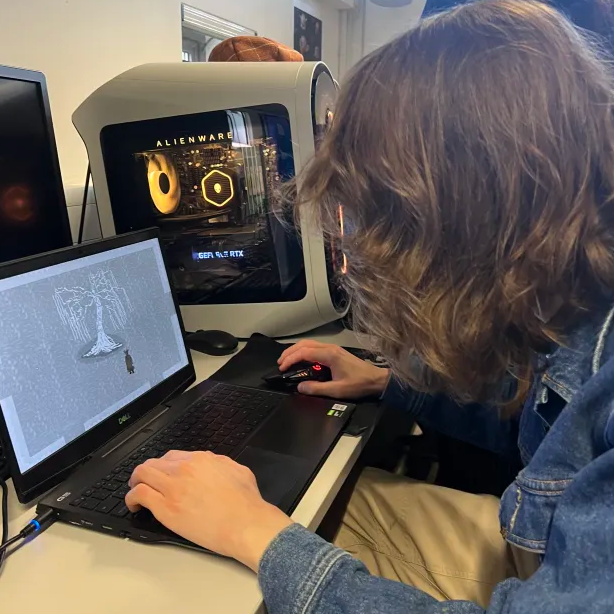
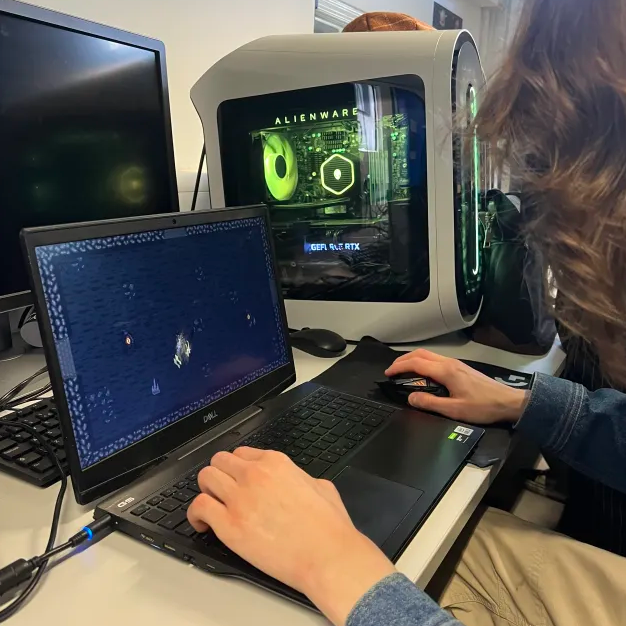
Playtest Feedback
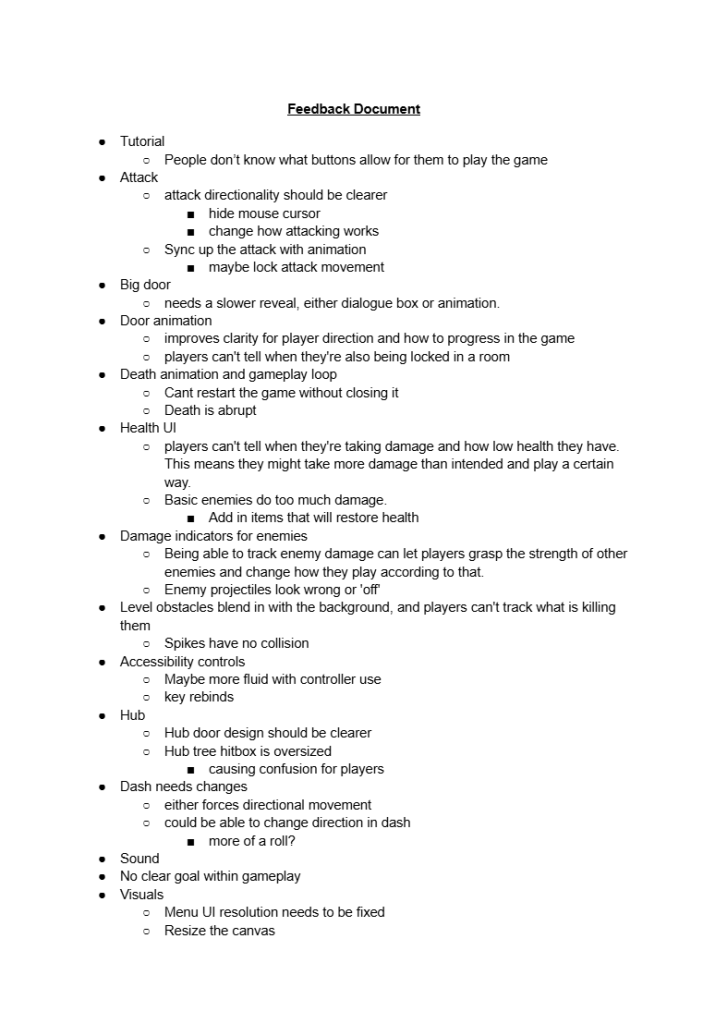
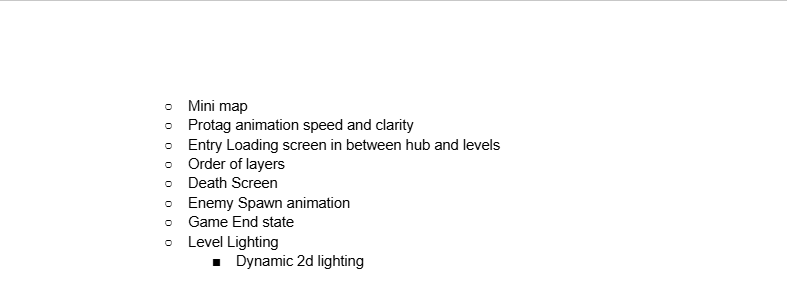
Joshua wrote down all the verbal feedback into a list, I helped organise this into sub-sections.
We had a lot of feedback, but this didn’t necessarily mean we had a broken game. The majority of our feedback was things that made the game unenjoyable, NOT unplayable. These were all things we could implement or change to make the player experience enjoyable and positive.
The main feedback we received was about the lack of a restart button. During the playtest, we had to keep reopening the file to start a new play session. People also found that the enemies were way too powerful and that they died too fast. The last main thing was that the spike obstacle that damages the player is the same colour as the environment, making it hard to distinguish and avoid.
Feedback Survey
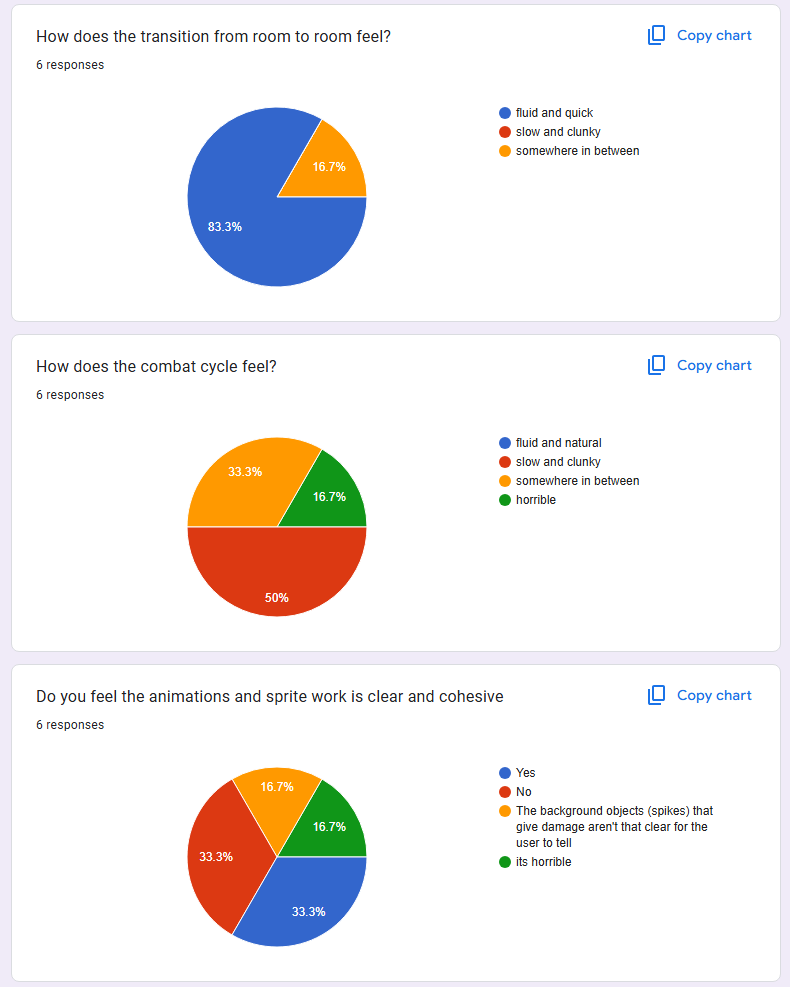

Josh created a Google form with three main questions for people to fill out and an open area for any other feedback.
The majority of people liked the room transitions and thought they were ‘fluid and quick’. This is what we aimed for, so this is good; we wanted smooth camera movement.
However, people didn’t like the combat cycle, they thought it felt ‘slow and clunky’. This is possibly because we had no instructions on how to play the game.
My Response to Feedback
I then took all the feedback and organised these tasks into priorities: High Priority (Makes the game unenjoyable/frustrating), Medium Priority (Makes the game slightly annoying to play) & Low Priority (Slight negative opinions).
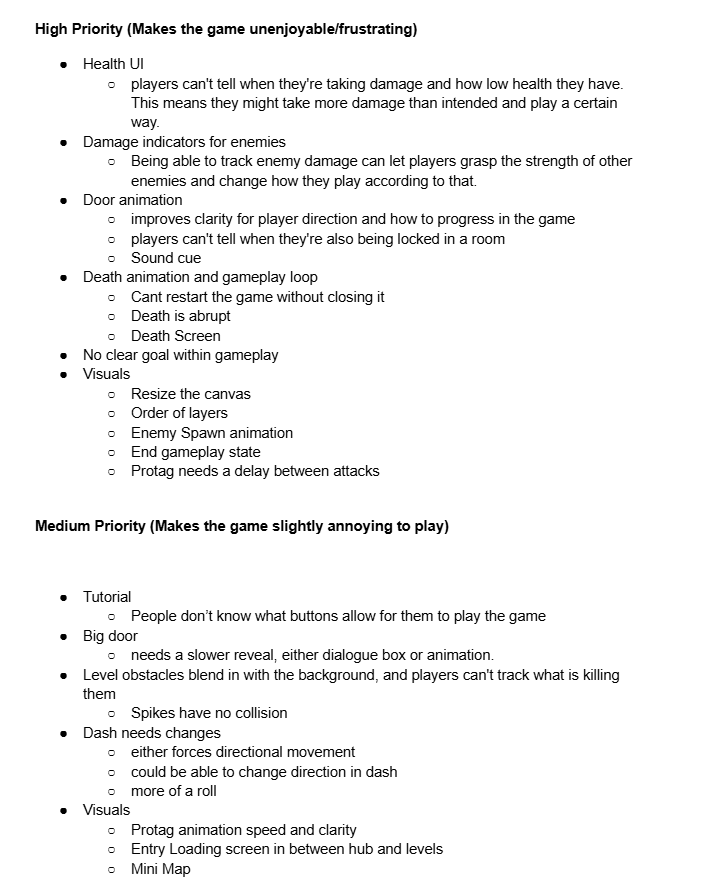
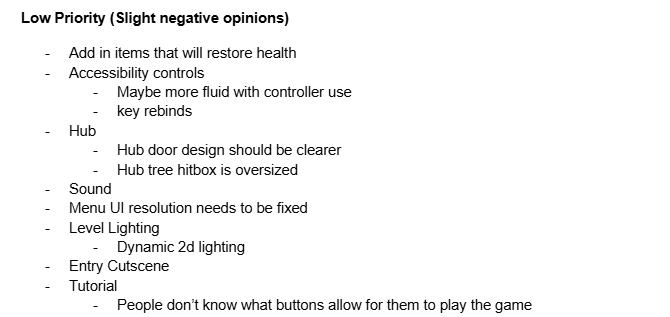
I then updated the Trello to include three new columns with these different priorities and assigned them to the right people and roles to help track progress on these new tasks and old ones, too. This will help with keeping track of team progress.
